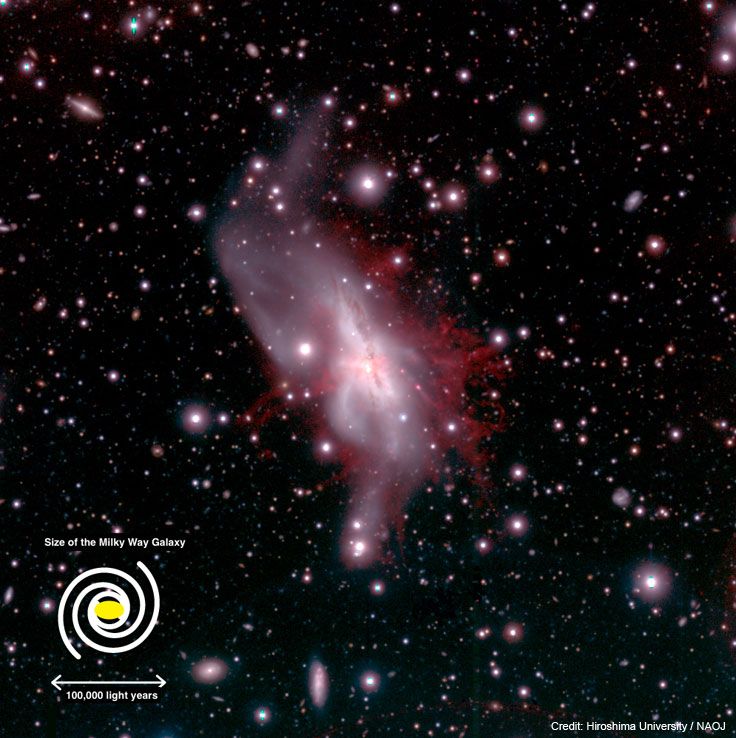A Violent Wind Blown from the Heart of a Galaxy Tells the Tale of a Merger
| Science
An international team led by a researcher from Hiroshima University has succeeded in revealing the detailed structure of a massive ionized gas outflow streaming from the starburst galaxy NGC 6240 (Figure 1). The team used the Suprime-Cam mounted on the 8.2-meter Subaru Telescope on Maunakea in Hawaii.
The ionized gas the astronomers observed extends across 300,000 light-years and is carried out of the galaxy by a powerful superwind. That wind is driven by intense star-forming activity at the galactic center. The light-collecting power and high spatial resolution of Subaru Telescope made it possible to study, for the first time, the complex structure of one of the largest known superwinds being driven by starbirth – and star death.

Credit: Hiroshima University/NAOJ Original Size (1.16MB)
The research paper based on these observations will be published in the Astrophysical Journal of the American Astronomical Society (Yoshida et al., 2016, "Giant H-alpha Nebula Surrounding the Starburst Merger NGC 6240"). This research was financially supported in part by Grant-in-Aid for Scientific Research No.2344030, No.15H02069 from Japan Society for the Promotion of Science (JSPS), No.24103003 from the Ministry of Education, Culture, Sports, Science and Technology (MEXT) of Japan, and MOST grant 104-2112-M-001-034- of Taiwan.